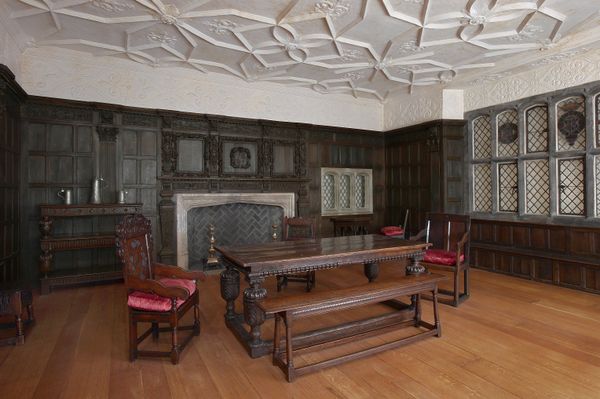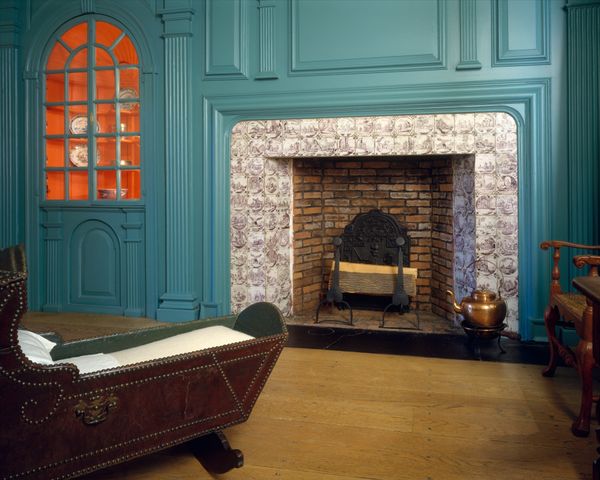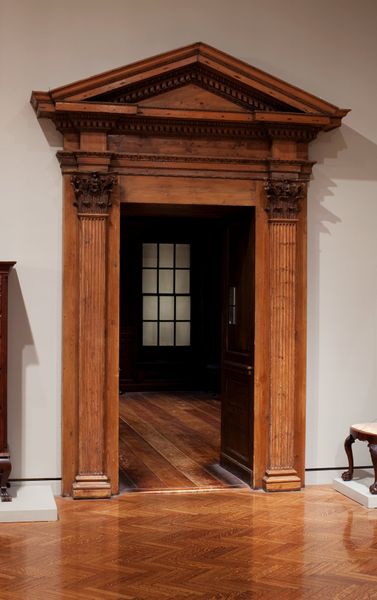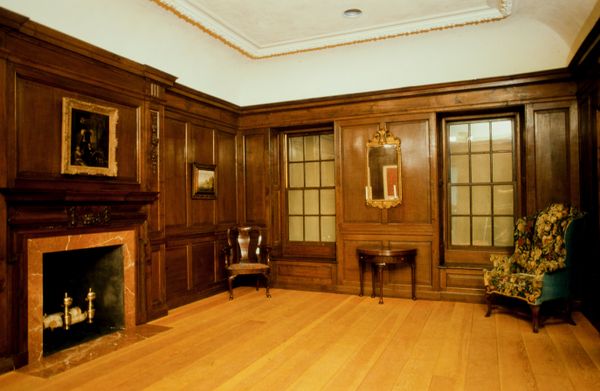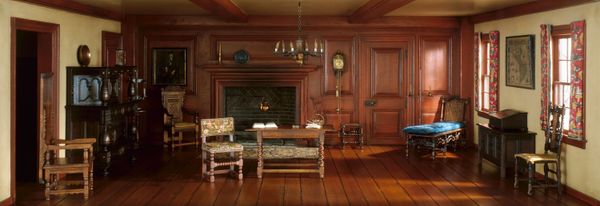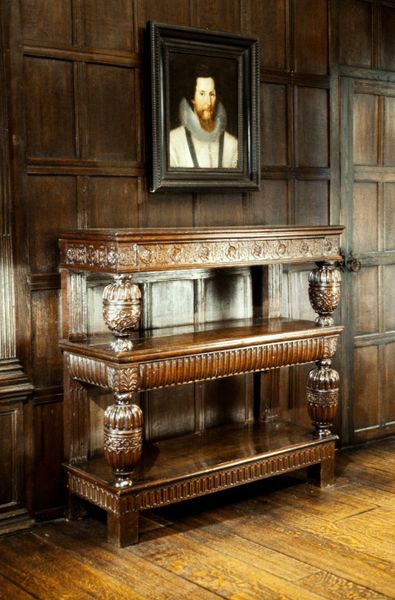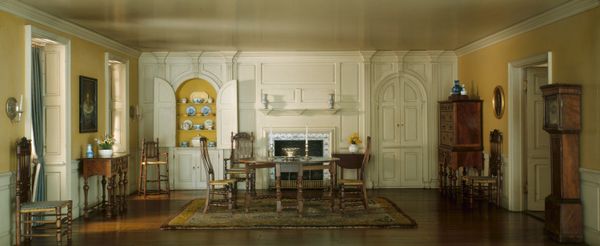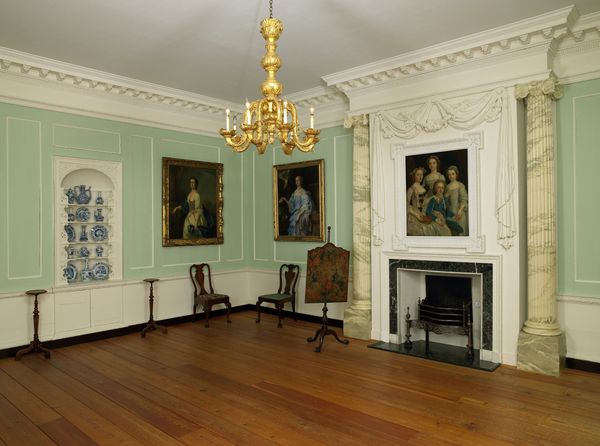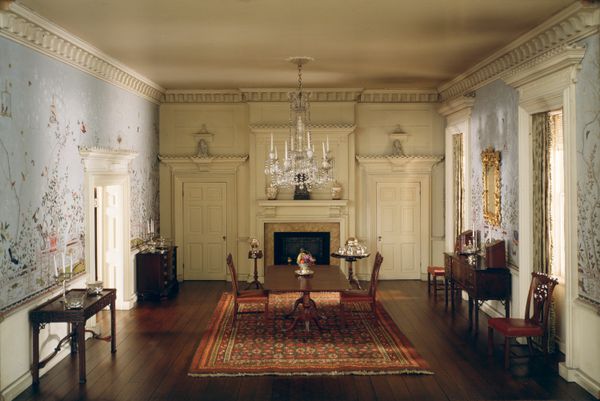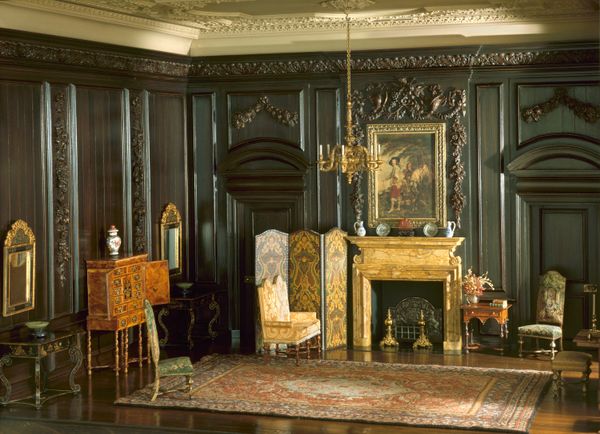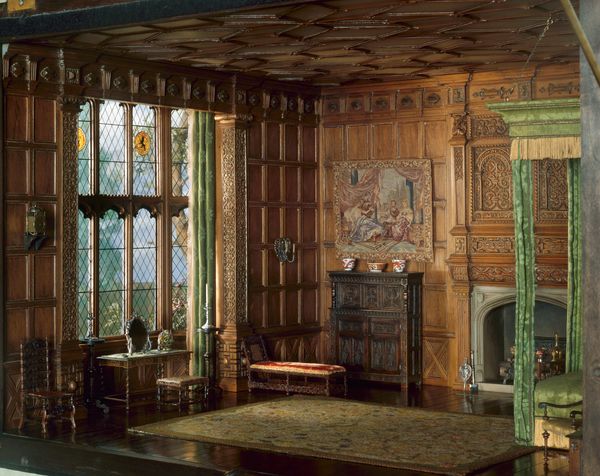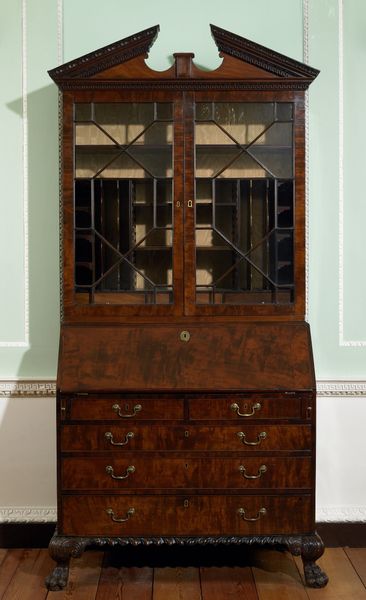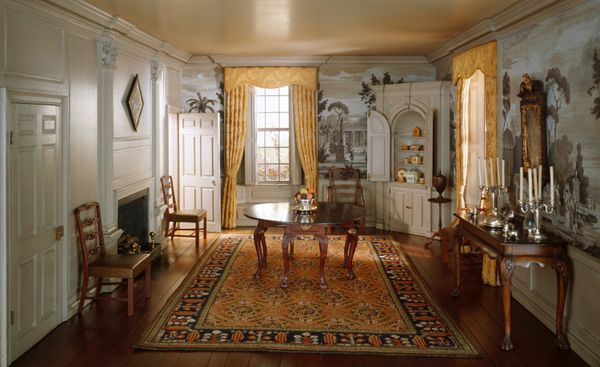
site-specific, architecture
#
site-specific
#
architecture
Dimensions: 96 x 180 in. (243.84 x 457.2 cm)
Copyright: Public Domain
Editor: So, this is the "Connecticut Room," dating back to around 1740. Being a site-specific installation, it's more than just objects; it's architecture, really. There's something austere, almost puritanical about it. What strikes you when you look at it? Curator: The fascinating thing for me is the production itself. Who built this room, and what labor went into its construction? Notice the hand-planed wood panels, the brickwork of the hearth – it speaks to a very specific, almost craft-based mode of production. Consider the social hierarchy involved: Whose labor made this space, and for whom was it made? Editor: So, you're focusing on the hands that built it rather than, say, the design elements themselves? Curator: Exactly. The subtle variations in the wood grain, the slight imperfections in the bricklaying – those tell a story of skill, of human effort, and a time before mass production completely redefined the spaces we inhabit. Even the paint! Pigments available, techniques employed… all reveal the materiality of the past. Who supplied those resources? Editor: It makes you consider how everyday objects, or in this case, entire rooms, can be records of social and economic practices. I hadn't thought about it on this level. Curator: Precisely. It prompts us to question the traditional boundaries we often place between 'art' and 'craft'. Both involved labor, skill, and material transformation. We should move past the art itself and ask about its creation. Editor: I can definitely appreciate that shift in perspective now, viewing it not just as a relic, but as a document of labor and consumption. Curator: And maybe understanding that changes the way we perceive the space around us.
